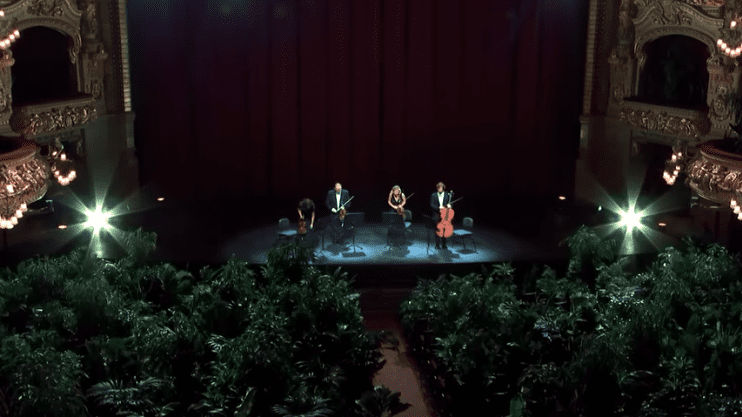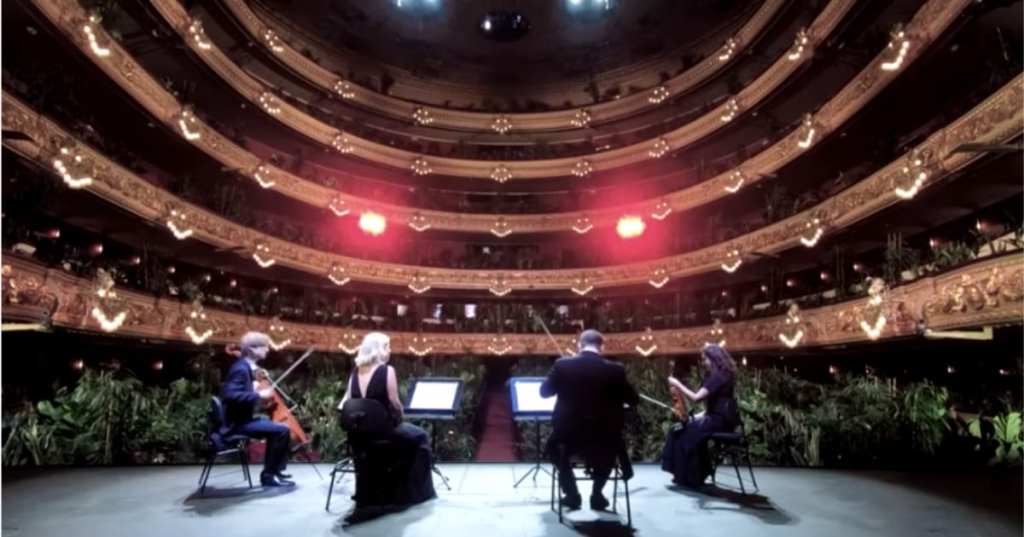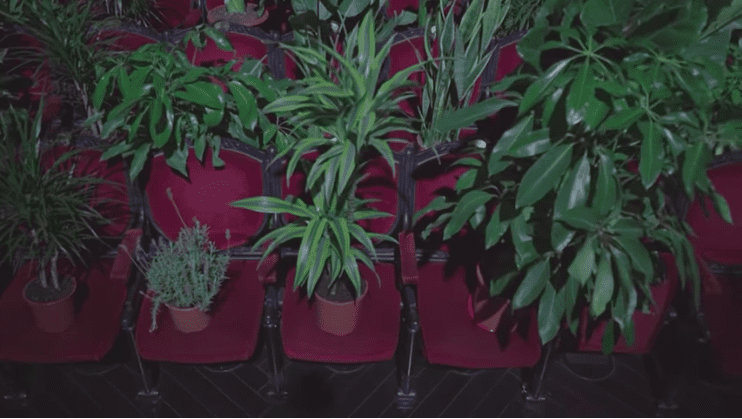Trending Now
If you’re a performer of any kind, then you know that one of the best things in the world is a captive audience. People are tough – they whisper, they shift, they crinkle their programs, they have to go to the bathroom…
Plants, though, are completely quiet and attentive for an entire performance, no matter how long it goes on.
A fact this string quartet surely appreciated after they put on a performance for an audience of 2300 house plants. They performed UceLi Quartet’s rendition of Giacomo Puccini’s Cristantemi (Chrysanthemum) at the Gran Teatre del Liceu in Barcelona.
The pictures are as bizarre as they are beautiful.
The theater hasn’t held any performances since March, so artist Eugenio Ampudia was able to implement his idea for a Concert pel Bioce (Concert for the Biocene), inspired by how his thoughts about nature have been impacted by the pandemic.
The plants were afterward gifted to the frontline workers at the Hospital Clinic of Barcelona.
The artist spoke with the Associated Press about his inspiration for the idea:
“I heard many more birds singing, and the plants in my garden and outside growing faster. A
nd, without a doubt, I thought that maybe I could now relate in a much more intimate way with people and nature.”
The performance can now be viewed online, and even though you might be tempted to laugh at the audience of greenery, the fact is that there’s evidence that plants enjoy music quite a lot.
In 1962, botanist T.C. Singh believed his plants benefitted from a growth spurt after hearing classical music, and the idea has been explored by countless children in science fairs ever since.
The type of music does seem to matter, as subsequent papers have claimed rock music like Zeppelin and Hendrix actually causes plants to wilt, and there are whole Soundcloud videos dedicated to music for plants.

Image Credit: YouTube
A 2014 study tried to establish how and why plants might benefit from certain types of music, positing that waves of varying intensities could impact cell growth – plants like lettuce, spinach, cotton, and rice grew between 5 and 20% more while in the presence of music.
Word is out on how the plants that enjoyed this performance reacted, but we all liked it, and I’m sure the hospital workers are happy to have their days brightened by fresh greenery.
There’s something otherworldly about seeing these plants in the seats where humans once sat (and will hopefully one day sit again).









